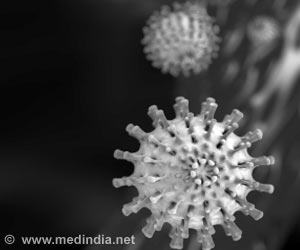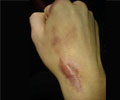Move over antibiotic ointment. There may be a new salve to dominate medicine cabinets of the future, and it comes from an unlikely place —the lowly salamander.

"This research takes a step toward an understanding of the cellular and molecular events that underlie quick wound healing in the salamander by the discovery of a potential wound healing promoting peptide," said Ren Lai, Ph.D., a researcher involved in the work from the Kunming Institute of Zoology at the Chinese Academy of Sciences in Yunnan, China.
To make this discovery, Lai and colleagues collected skin extract from salamanders and separated it by gel filtration and high performance liquid chromatography. The skin component from salamanders was subjected to keratinocyte cell proliferation and endothelial cell tube formation assay to evaluate possible wound healing potential. This component was further subjected to structure and functional analysis, which pointed toward a short peptide called tylotoin that contained 12 amino acid residues.
This peptide was found to exert the ability to promote wound healing with epidermal growth factor (EGF) in a murine model of a full thickness dermal wound. Tylotoin directly enhances the motility and proliferation of keratinocytes, vascular endothelial cells and fibroblasts, resulting in accelerated re-epithelialization and granulation tissue formation in the wound site. Tylotoin also promotes the release of transforming growth factor beta1 and interleukin 6, which are essential in the wound healing response.
"Until now, rapid wound healing has been the stuff of superheroes and science fiction," said Gerald Weissmann, M.D., Editor-in-Chief of The FASEB Journal. "Scientists have always wondered how some 'lower' animals heal wounds that would be mortal to humans. Now, we are taking concrete steps to mimic this ancient – and forgotten – healing process in our own bodies."
Source-Eurekalert














